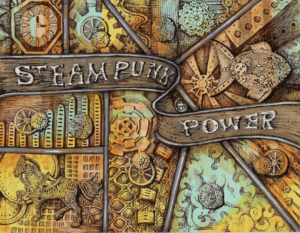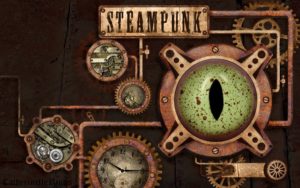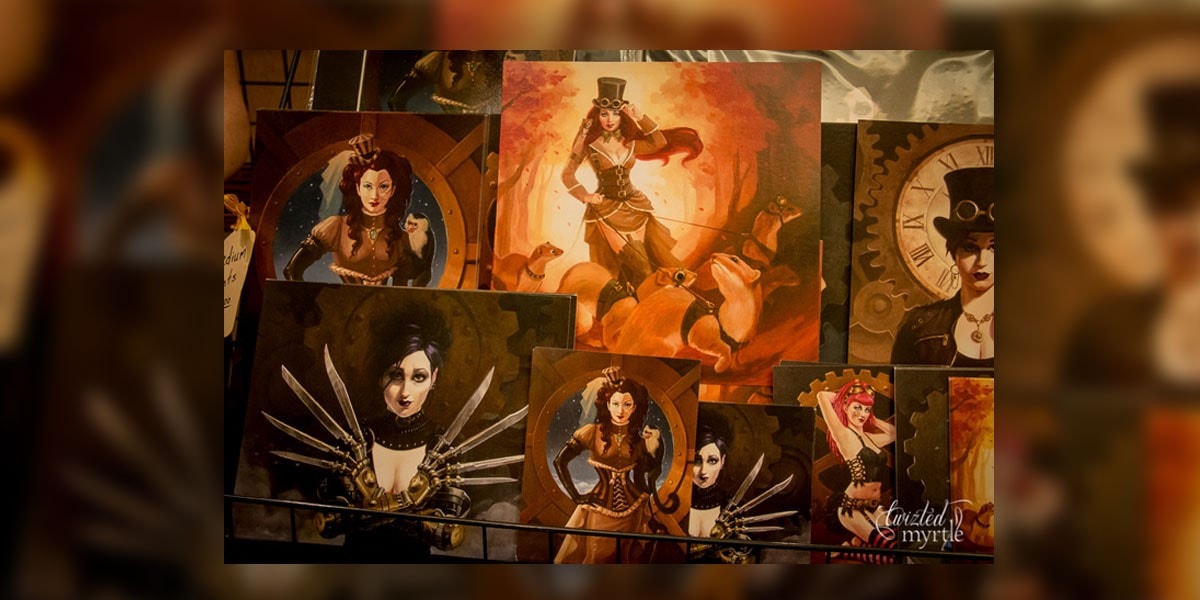Steampunk refers to that genre in fiction and films that deal with the rise of industrialization in America and England with the use of steam power. Such works of fiction are usually set in the 19th century England or America during the ‘wild west’ frenzy.
Steampunk is popularly classified as a sub-genre of science fiction. Very often such works are set in an imaginary world where steam energy is seen as the driving force behind the development and the forward march of the civilization. This world is a fantasy world run on the power of steam. Every gadget of public and private use is run on steam power in the world of steampunk. It is a world as a 19th-century gadget geek would have envisioned it to be. It features imaginary instruments and gadgets all run on steam.

History and origin
The word steampunk was first used by science fiction author K. W. Jetter in a letter to a science fiction magazine ‘Locus’. In his letter Jetter writes:
“Personally, I think Victorian fantasies are going to be the next big thing, as long as we can come up with a fitting collective term for Powers, Blaylock and myself. Something based on the appropriate technology of the era; like ‘steam-punks’, perhaps.”
However, many works of fiction dated as early as the 1920s are recognized under this genre. Fritz Lang’s masterpiece 1927 film ‘Metropolis’ is widely hailed as the film that eventually gave rise to this stylistic genre. Two other films ‘Titus Alone’ (1959) and ‘Brazil (1985) is also important precursors towards the creation of the genre. The word steampunk was coined by K. W Jeter is a letter he wrote to the ‘Locus’ magazine. It is believed to have been influenced by the word cyber-punk. Some of the earliest works identified as being precursors to this sub-genre are Fritz Lang’s ‘Metropolis’, ‘Titus Alone’ and ‘Brazil’. Common elements that feature in this genre are horror, black humour, alternate history and scientific and mechanical speculation. The inclusion of a wide variety of elements has turned it almost into a hybrid genre which is indebted to and relies heavily on other mainstream genres. Know more and share your views by participating in the International Essay Competition.
It is sometimes viewed as a nouveau-Victorianism or nouveau-Gothic style in literature and films. It largely features fashion, design, and settings if the Victorian era. Though most of the influence of this sub-genre is seen in film, television and print, a number of painters and musicians have also been identified as steampunk.
Cultural influence
Influence of this sub-genre has filtered among modern enthusiast with a number of video games, television series, fashion designers, etc. drawing on steampunk as inspiration. Various galleries now have started displaying steampunk installations. Special mention must be made to The Libratory Steampunk Art Gallery of New Zealand and the Mobilis in Mobili: An Exhibition of Steampunk Art and Appliance art exhibit in New York.
On the basis of an analysis of above half million posts on public message boards, social networking sites, blogs and news, IBM predicted in 2013 “that ‘steampunk,’ a sub-genre inspired by the clothing, technology and social mores of Victorian society, will be a major trend to bubble up and take hold of the retail industry.” In order to cater to the rising interest in steampunk, fashion houses like Prada, Versace, Chanel has started introducing steampunk influenced clothing lines.

The world of steampunk – fashion and settings
This world draws most of its influence from Victorian England or the 19th century ‘wild west’. The invention of the steam engine is considered to be the single most important piece of scientific discovery of the Victorian era and is widely credited for bringing about the industrial revolution in Victorian England. Similarly, the laying of the railway line connecting the southern and northern American states is considered to be the most important step the country took towards industrial, economic and social development. The works based on the steam-punk genre, therefore, are almost always set in these two historical settings.
Elements of Victorian fashion like the corset for women, waistcoats and military decoration inspired clothing for men are common. Accessories like a parasol, pocket chain watches, lorgnettes, etc. are also commonly used.

Nature of gadgets
The sub-genre of steam-punk is a world or metals and machines clinging, gushing moving at astonishing speeds to make unbelievable things happen. The spring is a common feature for such gadgets. Watches, guns, engines and other vehicles and top technology gadgets with stylistic design elements can be seen performing astonishing tasks. Iron and polished brass are the two most commonly seen metals in these gadgets. Apart from these, leather and a fair bit of wood are also seen.
In the latter part of the 20th century, a concerted effort has gone into designing and manufacturing steam gadgets. Some steampunk gadgets can also be bought online.

Steampunk installations and sculptures
Steampunk gadget designers have created some important sculptures and installations. The Clockwork Universe sculpture designed by Tim Wetherell’s displayed at Questacon, Australia; Paul St George’s design Telectroscope installation at London City Hall; electro-futuristic designs by Art Donovan are some of the important sculptures fabricated by artists in recent times. Several galleries and exhibitions have started featuring steampunk work owing to the increasing interest in steampunk gadgets and steampunk art.
Various social events like the “SalonCon” are also being organized to bring together steampunk artists and enthusiasts from all over the world. The largest steampunk event organized in Europe is the “Weekend at the Asylum”, held at The Lawn, Lincoln in every September since 2009. It is an event dedicated on steampunk and takes over a considerable part of the historical quarter of Lincoln in England.













September 7, 2018
3.5
December 12, 2018
4.5